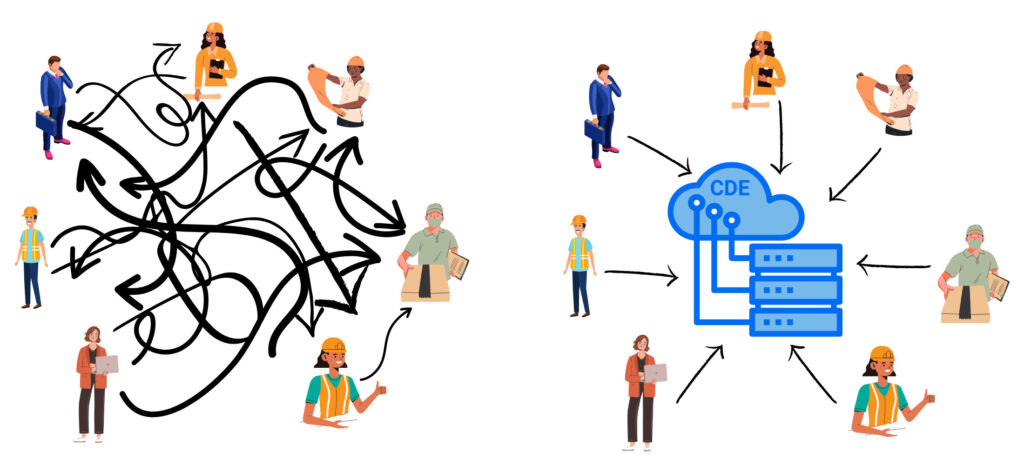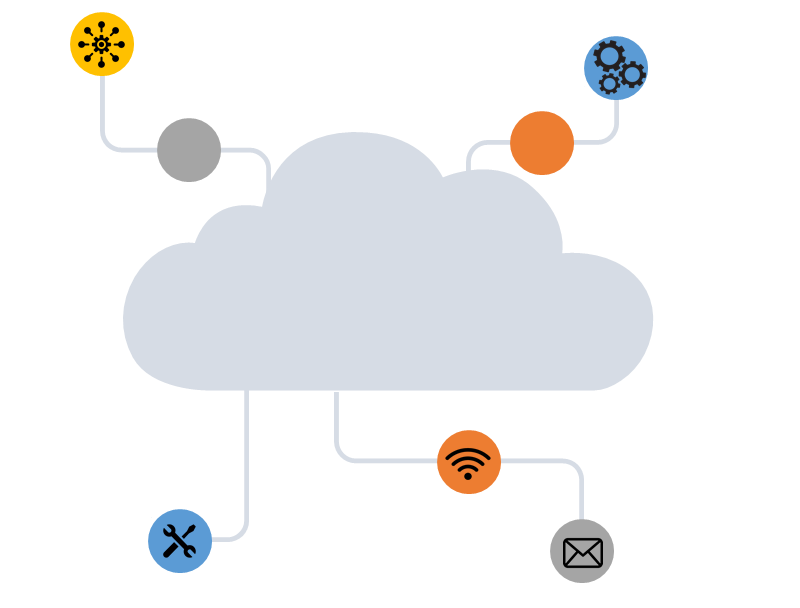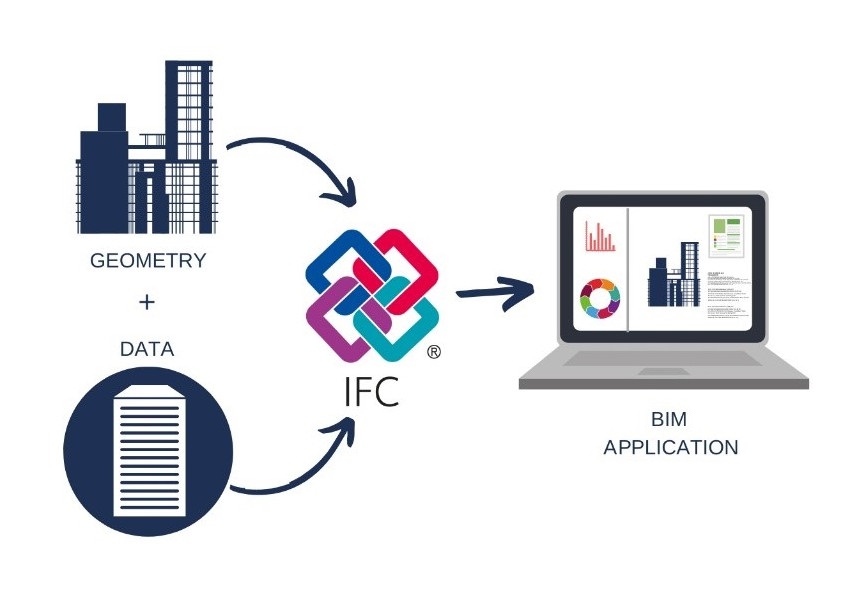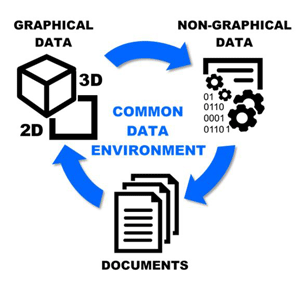Common Data Environment – How BIM helps manage Digital Information
How BIM can be the central source of data, the common data environment.
BIM is not only offering design in the construction industry, it can also be the way we share our data, the digital information management. In this article we explore what is a common data environment and how BIM can be one for the projects, bringing together digitalization and standardization.
Index
Common Data Environment explained
The concept of CDE or Common Data Environment is a term that is linked to BIM (Building Information Modelling) but independent of it. A CDE is the single source of information used to collect, manage and share documentation, the graphical model, and non-graphical data for the whole project team.
The set of a CDE inside a project structure is an essential task to give consolidation and stability to the project. There are many standards to establish a data shared environment following local databases, online ones, third-party clouds to link servers, APIs (Application Programming Interface) and data templates following several standards like ISO, EN, BS, IEC, or CEN.

Why the need for a Common Data Environment?
Talking in the same language facilitates communication. Good communication is key to the success of any business. So, the need to exchange a common place where the information is displayed equally all along the different products will guarantee the workflow at all levels.
The standardization of templates is a solution, but from a manufacturer’s perspective, it makes more sense to transpose these templates into BIM. This can be understood as producing a closed spreadsheet or PDF file where all the parameters have their own place, so you will know beforehand where to look for them inside which document before you open them. Because when we produce BIM formats, we are standardizing the way we share our information.
Talking on the machine level, this helps a lot with the data sharing processes as their coding will direct the actions to specific places where that information will be, otherwise it does not exist because it cannot be placed anywhere else. Thus, some APIs or applications can connect, extract and provide the desired data giving the name or identity as the location will be known.
If both (or more) parties sharing the CDE know their structure, that will also save time -and therefore money, between people’s interactions to find the correct information. No more endless thread emails or calls asking for information or their location among the several documents issued.

Data Templates as a basis for CDE
The key to establishing a successful CDE is to follow a solid data template. The selection for this will define how the CDE will work and how the parties involved can operate between themselves.
The ISO 23387:2020 (Data templates for construction objects used in the life cycle of built assets — Concepts and principles) talks about the importance of the digital data templates inside the construction environment. It is addressed to software developers aiming to standardize a common format to share and work with product and system information.
How can BIM participate in a CDE?
BIM provides file extensions that are attached to a determined software. As happens with closed extension files, their structure is configured by the software so there is no room to provide the same file types with different data structured inside. The file information structure is filled in and determined by the developer of the software, so all the users must comply with it if they want to use it.
This has advantages and disadvantages; we are forced to use the determined software to operate with that file and the structure is likely closed and cannot be modified. On the other hand, it also provides some benefits like providing a closed structure on the files will force users to adapt and fulfill the data in an organized way, making the files interoperable and collaborative regarding the company or user sharing them.
You may think that being attached to private software to use these files is not an interesting solution. The dependency on software is something that limits users and closes the market or field, while what we are searching for with a common data environment is the opposite.
To solve this, the buildingSMART organization introduced the IFC files (Industry Foundation Classes), an open format file for BIM objects in a closed structure, so the sharing of the data keeps organized and arranged while is not attached or dependent on any kind of specific software -of course, you still need a software to read an IFC file, but this is supported by many BIM software in the market, making it the open format of BIM.

The ISO 23387:2020 promotes that data templates should be used in conjunction with IFC to enable and support open BIM processes. Focused on software developers, it explains the linking between data templates with IFC and classification systems.
Therefore, providing information in IFC files is the way to create a solid CDE inside a project or company, making BIM technology a participant of the CDE.
Is CDE a good solution for BIM?
Establishing a common template for the work and data flow such as IFC will make a unique reference file for any kind of information needed on the product or system inside the project.
IFC files are built to follow the standards, they are open sourced and can be filled with more information if needed but in a close structure.
For example, if we want to look for a certain type of qualitative information within a product like its reaction to fire, we have two scenarios:
Look for that data inside the Declaration of Performances (DOP), Technical Data Sheet, or any other similar document or brochure issued in a likely PDF format where the structure is set by the manufacturer. Thus, this ‘reaction to fire’ information we are looking for won’t be established in the same place under the same structure among different companies. This is the main issue for the consolidation of data, the dispersed information following companies that issue the documentation.
However, if we provide this information through the IFC files or following a determined BIM software format, it will be stored on the same field, regardless of the provider being one company or another. This makes the interoperability of the data easier for sharing purposes.

The same occurs if we talk about quantitative information. Providing a value for a parameter like ‘Density = 1’ will be displayed in different positions among the several documents issued by a manufacturer about their products. This makes it hard for someone outside the organization (even people inside too) to find the information they seek.
What will a Common Data Environment provide?
Among the several advantages of using a CDE, these are its key points and a good resume of its concept:
- The connection between different databases or creation of an online one following a standard format.
- Accuracy and update of the information displayed as any changes will be reflected on both ends of the CDE users.
- Reduce repetitive checks, communications and data search on different bases.
- The data can be reused and kept in storage once the project is finished, so it makes the CDE a permanent and safe reference place for this project location.
- Collaboration increases between parties, even those using different software, as the CDE forces them to work under the same
To summarize, the implementation of a CDE will give consistency and solidity to a project or company structure. It makes a common language to work, coordinate and collaborate within parties (even inside the same organization) to bring the business to a more digital and organized world.
Author: Enrique Nadales Clavero, Tequma & TylkoAdvisors

Comments are closed.